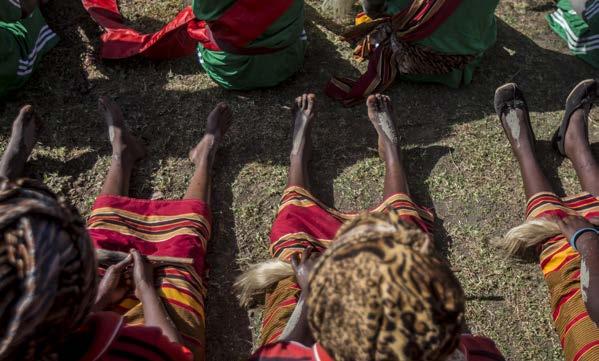
11 minute read
Insight: A Clear Picture of HRC Resolution 44/16
EU’s leading Support To Eliminate FGM
A CONveRSAtION WItH PAtRICIA PeNNetIeR, DIReCtORAte GeNeRAl ON DevelOPMeNt AND COOPeRAtION, euROPeAN COMMISSION
Advertisement
While strengthening multi-sectoral measures to eliminate FGM will involve addressing root causes of FGM including gender inequality and social norms, integrating FGM in humanitarian actions, accountability measures particularly enhancing the monitoring role of NHRIs is equally critical and important. This is even more urgent as UNFPA and partners take forward the implementation of the commitment of the Nairobi summit on the ICPD 25, reflective of the reaffirmed commitment to zero-tolerance FGM. The role of the NHRIs in preventing FGM is critical, and we acknowledge the EU’s leading support to actualise this, particularly being part of the decision to adopt the HRC 44/16. on the Elimination of FGM for many years and since mid 2020, the support has been through the Global spotlight Programme which is mainly established to eliminate all forms of violence against women and girls by 2030 as stated in the strategic Plan of the Fund.
This interview seeks to find out how EU is addressing the following root causes of gender inequality, including gender stereotypes, unequal power relations, negative social norms, attitudes, behaviors, and socio economic drivers towards FGM .
What enforces the eu’s contribution to the promotion of rights-based FGM prevention and elimination, including the Covid challenges highlighted by HRC 44/16? EU external action as recognised both under the EU Action Plan for Human Rights and Democracy, and under the Gender Action Plan III, which highlight the imperative need for the legal prohibition of FGM. Every year, the EU reaffirms its zero tolerance of FGM, whether practiced within the EU or beyond its borders. Despite some noteworthy progress in recent years, figures are still worrisome and are exacerbated by the disruption caused by CoVID19 in prevention programmes, seriously undermining progress made towards achieving the sDGs.
In this light, besides growing political commitments and investments to end FGM by 2030, further efforts need to be intensified to ensure that FGM is implemented globally and that CoVID related obstacles be The EU continues to work with determination towards this goal and believes that progress is still possible. Encouraging the abandonment of FGM requires coordinated and holistic initiatives that must involve authorities and the entire communities and address fundamental rights and gender equality. To this end, the EU has been supporting projects to combat FGM worldwide, engaging communities on the need to eliminate FGM and transforming social norms through collective action.
by way of a practical example of what the EU is doing, the initiative supporting UNFPA/UNICEF through the Joint Programme on the Elimination of FGM focuses on strengthening policy development and implementation, while improving access to quality health care, protection, and legal and social services in 18 countries in sub-saharan Africa (for a total amount of EUR 18 million between 2016-2022). The EU is also contributing to the end of FGM through the EU-UN spotlight Initiative whose primary ambition is to eliminate all forms of violence against women and girls in 26 countries and 6 different regions with its comprehensive and multisectoral approach. In parallel to the operational actions, the EU is using political and human rights dialogues with partner countries to advocate for the elimination, prevention and protection from all forms of sexual and GbV, including social norms and harmful practices.
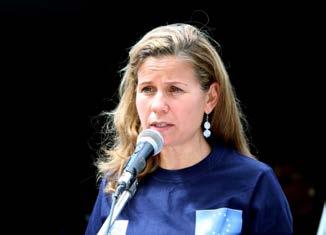
What is the eu’s take on strategies to change/transform gender dynamics with reference to gender roles as a result of social conservatives negatively impacting women’s decision making to their bodily autonomy, including protecting them from FGM?
An enabling legal and policy framework backed up with sufficient resources and clear commitments at the highest level, and adequate data on which to make informed decisions are crucial for combatting FGM. However, prohibition and criminalisation are not enough for sustained results. With FGM being rooted in social and cultural norms that devalue women and girls, we also need to scale up innovative interventions that raise awareness and address social norms and strengthen social accountability at all levels, including the community level.
This is the reason why, to address the root causes of gender inequality and contribute to counter the multiplicity of stereotypes prevailing in many contexts, the EU is taking a gender-transformative approach in its actions against GbV. This means examining, questioning, and changing gender norms and imbalances of power, which disfavour women and girls and lead to harmful practices such as FGM. This means the EU promotes change in social attitudes, including by actively engaging men and boys and by putting a focus on young people as drivers of change. To work efficiently in a sensitive context, it is essential to forge strong partnerships and dialogue with local actors, civil society, GbV survivors,local communities and support women’s organisations.
The EU is confident that change is possible and it is happening, but it is a lengthy process and requires relentless efforts. We have seen that in some countries, people and communities have already abandoned FGM. Attitudes, beliefs and norms can change when people understand the hazards of certain practices and
realise that it is possible to give up harmful practices without giving up meaningful aspects of their culture.
From your perspectives and experience, what examples will you suggest on how HRC 44/16, and the Primer for NHRIs capacity strengthening may have been or could be of advantage to global priorities of ending harmful practices within the SDG 5.3 by 2030?
NRHIs play a crucial role in promoting and monitoring the effective implementation of International Human Rights standards at the national level and thus have an important role to play in strengthening national accountability for the elimination of FGM. HRC 44/16 highlights the specific contribution that NHRIs can make in case their capacity to investigate human rights violations related to FGM and to monitor progress in preventing and eliminating this harmful practise is increased.
The Primer is a critical and extremely timely tool to help NHRIs discharge their monitoring mandate and address the accountability gap that many survivors of FGM still face today.
NHRIs from EU countries have a role to play in monitoring the conduct and efforts of our own governments, as FGM is also practised in the EU Member states. Yet, in terms of our external actions, the EU is also keen to support NHRIs from highly prevalent partner countries to discharge the mandate of Resolution 44/16. This support complements the substantial efforts of the EU to end FGM and other harmful practices once and for all.
A shared commitment to translating global policy into action, including at the local level, will be the only way to make sure that CoVID 19 does not derail us from our goal to accelerate the promise of the sDGs (goal 5.3 to eliminate harmful practices) and to end the unfinished business of the ICPD agenda by 2030.
2022 will definitely be a busy one for you, would you like to share some of the plans you have in the pipeline in terms of funding implementation of, and accountability on HRC 44/16?
Indeed, the EU is in the middle of the programming phase of its external actions for the next 7 years and is working hard to translate the strong positions it has taken against all forms of GbV, including harmful practices such as FGM, into concrete actions and measures. In particular, the EU is striving under its new external financing instrument, the Neighbourhood, Development and Cooperation Instrument and Global Europe, to make gender equality and the empowerment of women and girls a major objective for at least 85% of all new external actions by 2025. Programmes to prevent and abolish FGM through the actions listed in HRC 44/16 are an integral part of these objectives. This year, the spotlight Initiative and the UNFPA-UNICEF Joint Programme on the Elimination of FGM will continue to represent at the global level the EU commitment in the fight against harmful practices. However, we must also add the initiatives developed at country level and managed by EU Delegations that will continue in 2022 to support local communities and Csos in eliminating FGM.
In 2022, the EU will continue to stand up for women and girls’ rights and speak out against FGM, While the practice is becoming less common in some parts of the world, progress is still uneven and too slow to be on track with the 2030 target for its effective elimination and prevention. Nothing can justify this violence against women and girls, and no one can stay silent.
Senegal Youth Forum round-Table

Global Youth Consortium
GlobAl YoUTH CoNsoRTIUM AGAINsT FEMAlE GENITAl MUTIlATIoN: EMPoWERING YoUNG PEoPlE To ACT AGAINsT FGM
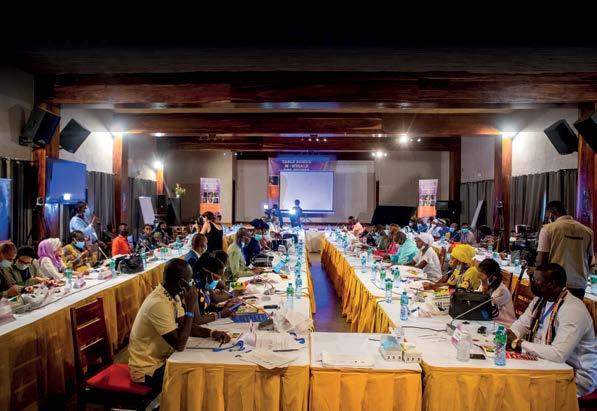
The UNFPA-UNICEF Joint Programme on the Elimination of FGM is the largest global programme addressing FGM. Coordinated by UNFPA and UNICEF, the Joint Programme recently launched a youth movement, called the Global Youth Consortium Against FGM. The purpose of this youth consortium is to empower young people to act against FGM in their various communities. Current membership in three months includes over 700 young people ages 17-40 from more than 45 countries.
The consortium was first established at a Global Youth Conference that took place in senegal in November 2021. The conference involved young people from over 25 countries. They reviewed the new proposal of the UNFPA-UNICEF Joint Programme to End FGM and established the Global Youth Consortium against FGM. They developed a vision, as well as guidelines on the structure, membership and activities of the consortium. The vision of the Global Youth Consortium is “Youth leading a World Free of FGM by 2030.”
After the conference in November, the first WhatsApp group was formed. The guiding document of the consortium was finalised, and the first executive was elected. The consortium was officially launched on 8 February 2022, as part of the commemorations of the International Day of Zero Tolerance to FGM. The ceremony was opened by UNFPA Executive Director Ms. Diene Keita and was attended by the Ambassadors of Portugal, EU, UK and Norway, who are key donors of the joint programme to End FGM.
A call for interested applicants was shared, and hundreds of young people filled out the application form to join the Youth consortium. This saw a rise in membership and the creation of three WhatsApp groups which are currently being used to coordinate the activities of the Consortium.
Ongoing activities:
The Executive has developed an annual work plan for the Youth Consortium and submitted it to both UNFPA and UNICEF, pending approval. If successful, funds will be disbursed for the Youth Consortium’s activities in various countries.
Following the election of the executive and regional presidents, countries are now expected to elect a Country Representative. The Country Representative will be responsible for coordinating the Youth Consortium’s activities in each country and will report to the Executive. The Country Representative will also represent the country at international events, on behalf of the Youth Consortium. as they have been reserved for under-represented regions. Underrepresented regions that are expected to fill these positions are the Arab state, Asia-Pacific Region, and the Diaspora region consisting of Europe and the Americas
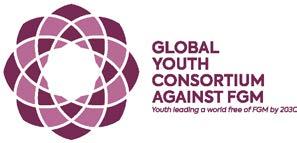
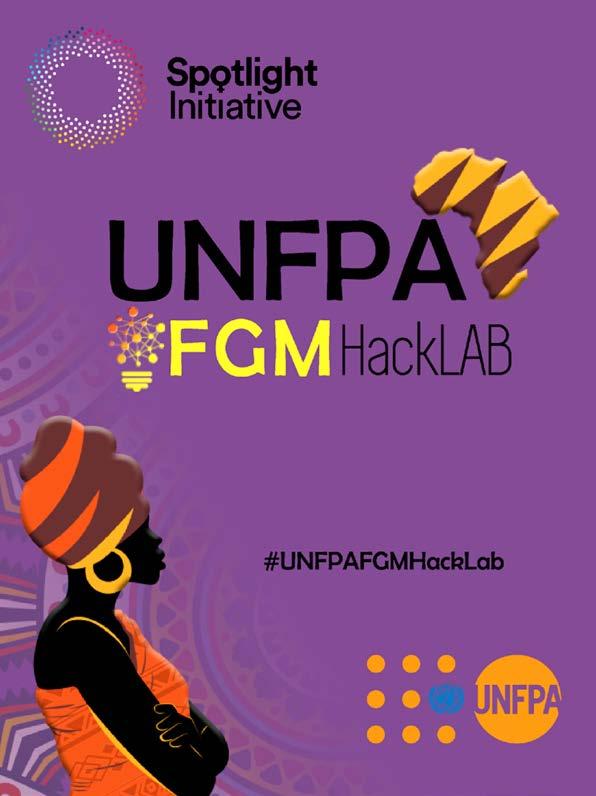
The agenda for 2030 is clear: there can be no sustainable development without gender equality. Unfortunately, throughout the world, women and girls continue to experience multiple and intersecting forms of discrimination which leaves them behind and excluded from progress. social norms and structural factors related to economic and social inequalities have resulted in harmful practices against adolescent girls such as FGM and child marriage. These harmful practices are clear manifestations of gender inequality. These are violations of the rights of women and are part of the continuum of GbV
● It is estimated that one in three women will experience physical or sexual violence in her lifetime.
● Two million additional cases of FGM may occur over the next decade, as CoVID-19 disrupts schools and other systems that help protect girls from this harmful practice.
● over 68 million girls aged 0-14 are at risk of being subjected to FGM in Africa by 2030.
● In African countries affected by FGM, seven in ten girls and women think the practice should be abolished.
● 50% of girls and women who have been subjected to FGM, say the practice should be abolished.
● CoVID-19 disrupted the progress achieved in Africa to end FGM and showed us the fragility of the progress made so far.
Ms Mireille Tushiminina, Co-ordinator of the UNFPA/ UNICEF Joint Programme on the elimination of FGM, said the programme started in 2008, with the UNFPA and UNICEF jointly leading the largest global programme on the elimination of FGM in 17 African countries. Collaborating with the spotlight Initiative Africa Program, the UNFPA / UNICEF Joint Programme on FGM initiated the launch of the FGM Innovation Hacklab project in 2021. The aim was to engage young people across the African continent who had designed and wanted to develop sustainable, innovative ideas and solutions in line with ending FGM in Africa.
Phase one of the programme elicited 120 proposals from young innovators across the continent. over 60% of the submissions were from young women. Phase Two saw the selection of the most implementable ideas from 40 participants, who were enrolled in an intensive personal and business development training programme to hone their ideas. In Phase Three, 9 innovators participated in the Final Virtual Pitch Event on 7 December 2021, where 4 Winners were ultimately chosen.
These 4 winners are to participate in a business incubation programme, provided by Afrilabs, an Africa based, youth led, innovation incubator that has a network of incubation hubs across the continent. The 4 winners will also receive $50,000 in seed funding each, to roll out their innovations.










